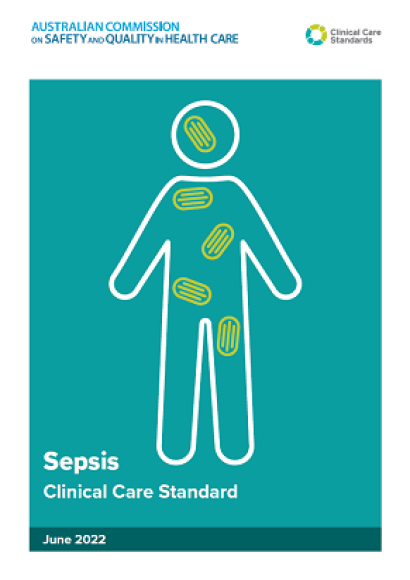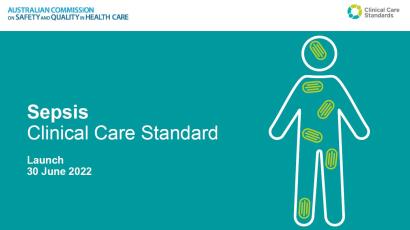Sepsis Clinical Care Standard
The Sepsis Clinical Care Standard ensures that a patient presenting with signs and symptoms of sepsis receives optimal care, from symptom onset through to discharge from hospital and survivorship care.
The national standard was released by the Commission on 30 June 2022.
Story of Excellence
Grassroots strategies improve regional sepsis response
Flinders and Upper North Local Health Network (SA) has been recognised with a 10th Anniversary Clinical Care Standards Excellence Award.
Learn more about how they designed a sepsis pathway tailored to local needs to improve early recognition and diagnosis of sepsis or watch our webinar - Clinical Care Standards on the frontline: Five Stories of Excellence.
Overview
Sepsis is a life-threatening condition that arises when the body’s response to an infection damages its own tissues and organs.
The Sepsis Clinical Care Standard will help to ensure sepsis is recognised early and patients receive coordinated, best-practice care so that the risk of death or ongoing morbidity is reduced. This includes timely recognition of sepsis, early and appropriate antimicrobial therapy and continuity of care from the acute setting through to discharge and survivorship.
National launch and webcast
The Sepsis Clinical Care Standard was launched via webcast on Thursday, 30 June 2022. Broadcaster and commentator Julie McCrossin AM, led an engaging discussion about the early recognition of sepsis and rapid assessment and treatment, and post-sepsis syndrome, with expert panellists Dr Carolyn Hullick, Professor Simon Finfer AO, Associate Professor Paula Lister and Dr Lorraine Anderson. The Standard was launched by Professor Villis Marshall AC.
The presentation slides from the launch of the standard are also available for download:
Communications resources
A communications kit has been developed to support the release of the clinical care standard. Download and share the content on your website, social networks or within your health service organisation.
Contents and resources
The Sepsis Clinical Care Standard contains:
- seven quality statements describing the care that should be provided
- a set of indicators to support monitoring and quality improvement.
The clinical care standard provides guidance for consumers, clinicians, and healthcare services including information about what each statement means, and a series of implementation resources.
Implementation resources
Quality improvement tools have been developed for health services including a self-assessment tool and an indicator monitoring tool. Other implementation resources include guidance around the use of antimicrobials and lactate, patient information resources, and discharge planning tools and resources to support care coordination and post-sepsis support. A number of case studies illustrate best practice and innovation in sepsis care.
You can also find links to relevant related resources, including sepsis resources from states and territories around Australia.
Consultation and endorsement
The standard was developed in consultation with a topic working group of clinicians, researchers and consumers. Public consultation on the clinical care standard was carried out between August and September 2021. The standard has been endorsed by 27 key professional associations and consumer organisations including the Australasian College for Emergency Medicine (ACEM), the College of Intensive Care Medicine of Australia and New Zealand (CICM), the Council of Remote Area Nurses (CRANAplus), the Royal Australasian College of Physicians (RACP), the Australian Sepsis Network (ASN) and the National Aboriginal Community Controlled Health Organisation.
Evidence base
Further information is available on the evidence base which underpins the Sepsis Clinical Care Standard, and the rapid literature and evidence review commissioned to inform the standard’s development.
Background
Sepsis is considered a major cause of morbidity and mortality. In 2017, there were 55,251 cases of sepsis in Australia and 8,702 sepsis-related deaths in people of all ages. In Australia, the direct hospital cost of sepsis to the healthcare system is approximately $700 million per year, with indirect costs of more than $4 billion per year including children and adults.
More on Sepsis at the Commission
Contact us
If you have any questions about the Sepsis Clinical Care Standard, please email ccs@safetyandquality.gov.au
For future updates on Standards due to be launched and out for consultation, follow us on X (Twitter) @ACSQHC or subscribe to our eNewsletters.


